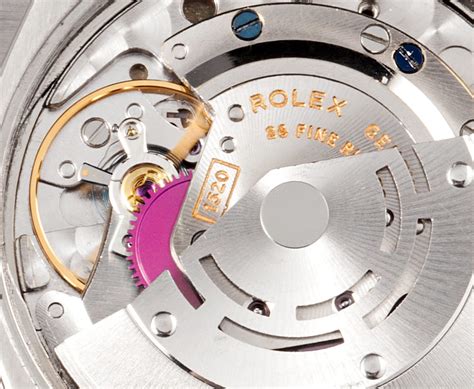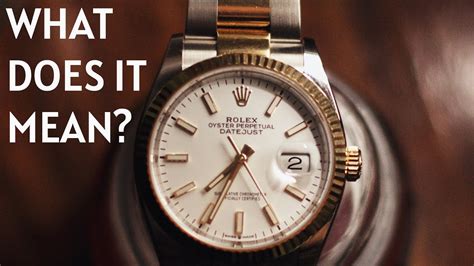1931 rolex oyster perpetual movement | Rolex Oyster Perpetual collection 1931 rolex oyster perpetual movement Invented by Rolex in 1931, the Perpetual rotor drives this ability using a centrally-mounted winding weight that is able to rotate a full 360 degrees. The activity of the wrist causes the rotor to rotate back and forth, thus winding the mainspring that powers the watch. Golden Nugget Hotel & Casino Las Vegas. 129 East Fremont Street, Las Vegas, NV 89107, United States of America – Great location - show map. You're eligible for a Genius discount at Golden Nugget Hotel & Casino Las Vegas! To save at this property, all you have to do is . Featuring an outdoor pool, poolside bar and lounge area, this Las Vegas .
0 · how does Rolex perpetual work
1 · Rolex what does oyster mean
2 · Rolex op 36 tiffany blue
3 · Rolex Oyster Perpetual collection
4 · Rolex Oyster Perpetual 36mm turquoise
5 · Rolex Oyster Perpetual 36 thickness
6 · Rolex Oyster Perpetual 36 2022
7 · Rolex Oyster Perpetual 2021
2024 Best Neighborhoods to Raise a Family in Las Vegas Area - Niche. 2024 Best Neighborhoods to Raise a Family in the Las Vegas Area. Best for families. Best places to live. Most diverse. Best to buy a house. View on map. Area type. City neighborhood. Suburbs. Towns. Public schools grade. A. B. C. D. Cost of living. $$$$ Who lives here. .
how does Rolex perpetual work
Invented by Rolex in 1931, the Perpetual rotor drives this ability using a centrally-mounted winding weight that is able to rotate a full 360 degrees. The activity of the wrist causes the rotor to .Just five years later in 1931, Rolex introduced another major innovation – .
Born in 1931, this collection marked a pivotal moment in watchmaking history .
dames nike hielspoor
Invented by Rolex in 1931, the Perpetual rotor drives this ability using a centrally-mounted winding weight that is able to rotate a full 360 degrees. The activity of the wrist causes the rotor to rotate back and forth, thus winding the mainspring that powers the watch.Just five years later in 1931, Rolex introduced another major innovation – the first self-winding or “perpetual” movement in a wristwatch. This technology harnessed energy from arm movements to automatically wind the mainspring, eliminating the need to manually wind the watch. Following the successes of the Oyster, Rolex worked closely with movement manufacturer Aegler. Wilsdorf tasked Aegler in 1931 to ‘invent an automatic winding mechanism that turns back and forth silently, smoothly and without buffer’.In 1931 Rolex patented a self-winding watch movement, this was one of the first movements to be wound through the means of a rotor ‘weight’. This weight moved as the wearer moved their arm and wrist, constantly winding the mechanism. Hence the moniker ‘Perpetual’ as it would be perpetually wound.
Rather than developing an elegant, streamlined, and thin automatic movement from scratch, he chose instead to fit his automatic rotor and winding assembly atop a conventional hand-wound. In 1931, Rolex made a breakthrough in watchmaking by patenting one of the first self-winding movements powered by a rotor ‘weight.’ This innovative mechanism used the natural motion of the wearer’s wrist and arm to keep the watch constantly wound.
Born in 1931, this collection marked a pivotal moment in watchmaking history with the introduction of the Perpetual movement. The Oyster Perpetual combines Rolex's innovative self-winding mechanism with the robust Oyster case, creating a timepiece that's both durable and self . Development of the Perpetual Movement: In 1931, Rolex unveiled the Perpetual movement, which was the world’s first self-winding mechanism with a perpetual rotor. This automatic winding system, powered by the natural motion of the wearer’s wrist, eliminated the need for manual winding and revolutionised the watch industry.
The Oyster Perpetual that was launched in 1931 still looks markedly similar to what Rolex is producing today and, when seen alongside styles unveiled around the same time, such as Longines’.Perpetual movement. In 1931, Rolex invented and patented the world's first self-winding mechanism with a Perpetual rotor. This ingenious system, a true work of art, is today at the heart of every modern automatic watch.Invented by Rolex in 1931, the Perpetual rotor drives this ability using a centrally-mounted winding weight that is able to rotate a full 360 degrees. The activity of the wrist causes the rotor to rotate back and forth, thus winding the mainspring that powers the watch.Just five years later in 1931, Rolex introduced another major innovation – the first self-winding or “perpetual” movement in a wristwatch. This technology harnessed energy from arm movements to automatically wind the mainspring, eliminating the need to manually wind the watch.
Following the successes of the Oyster, Rolex worked closely with movement manufacturer Aegler. Wilsdorf tasked Aegler in 1931 to ‘invent an automatic winding mechanism that turns back and forth silently, smoothly and without buffer’.In 1931 Rolex patented a self-winding watch movement, this was one of the first movements to be wound through the means of a rotor ‘weight’. This weight moved as the wearer moved their arm and wrist, constantly winding the mechanism. Hence the moniker ‘Perpetual’ as it would be perpetually wound.
Rather than developing an elegant, streamlined, and thin automatic movement from scratch, he chose instead to fit his automatic rotor and winding assembly atop a conventional hand-wound.
In 1931, Rolex made a breakthrough in watchmaking by patenting one of the first self-winding movements powered by a rotor ‘weight.’ This innovative mechanism used the natural motion of the wearer’s wrist and arm to keep the watch constantly wound.
Born in 1931, this collection marked a pivotal moment in watchmaking history with the introduction of the Perpetual movement. The Oyster Perpetual combines Rolex's innovative self-winding mechanism with the robust Oyster case, creating a timepiece that's both durable and self . Development of the Perpetual Movement: In 1931, Rolex unveiled the Perpetual movement, which was the world’s first self-winding mechanism with a perpetual rotor. This automatic winding system, powered by the natural motion of the wearer’s wrist, eliminated the need for manual winding and revolutionised the watch industry. The Oyster Perpetual that was launched in 1931 still looks markedly similar to what Rolex is producing today and, when seen alongside styles unveiled around the same time, such as Longines’.


dames nike golfkleding
The Essential V necklace is the must have piece of your wardrobe. Timeless and easy to wear with its feminine proportions, it features the iconic V signature. Gold finished brass metal
1931 rolex oyster perpetual movement|Rolex Oyster Perpetual collection




























